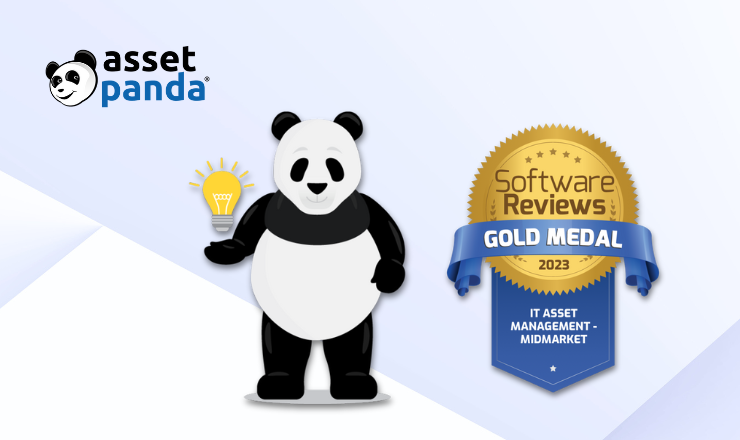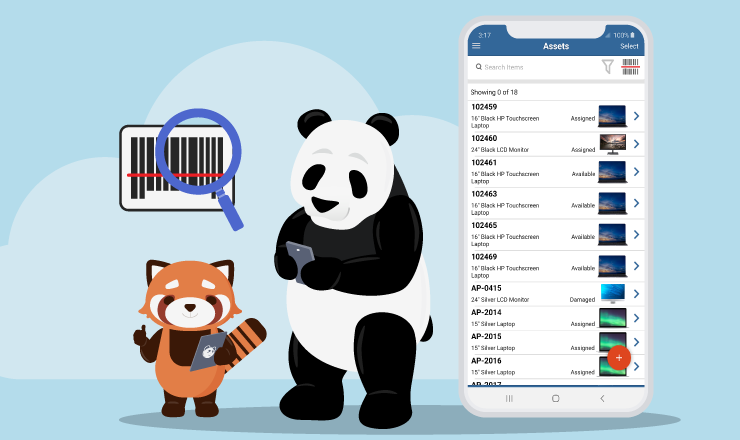4 Steps for Building Your Custom Asset Tracking System

Take Control of Your Assets
A personalized demo is just one click away.
Managing assets through an asset tracking system are essential for any business or workplace. Why? Because knowing what assets you own, where they are, and how much they cost to own and operate allows you to run your business efficiently and manage your costs effectively. That said, developing an asset tracking system that’s right for your unique business isn’t always straightforward. The many types of businesses and their assets can mean that what works for one company may not be suitable for another.
We’ve put together this guide to help any business understand what asset tracking is, why you need it, and four simple steps to get you on your way to building an asset tracking solution to help your business be successful.
Do You Need A Tracking System for Your Assets?
An asset tracking system allows you to document, track, and manage all of the assets your company holds and regularly uses— from physical assets (machinery, furniture, tools) to software or IT assets (computer software, licenses, accounts).
Asset tracking software such as Asset Panda takes many of the manual processes involved with asset tracking and automates them. Many businesses handle these processes with spreadsheets or pen and paper solutions, and some don't really handle them at all. With a dedicated software solution, you can get powerful features that increase visibility, clarity, compliance, and efficiency at every stage of the asset tracking process.
In practice, asset tracking for physical assets often involves printing physical tags affixed to the assets themselves. Then you can scan your physical assets with dedicated barcode scanning hardware or with a system like Asset Panda's mobile app, most mobile devices with built-in cameras.
The Advantages of an Efficient Asset Tracking System
What can a high-quality asset tracking system do for your business? Benefits range from increased profitability to better customer service. Here are some of the key advantages of implementing a robust asset tracking system for your business, whether large or small, physical-asset-based or software-based.
Reduced Costs
Efficient asset tracking can go a long way in helping you reduce costs at your business. For one, it eliminates paying employees to track assets themselves manually. Not only does this save on time costs associated with hours your employees spend on these tasks, but it can also help reduce the costs associated with human error, leading to lost assets or misappropriated funds.
Increased Accountability
Many businesses list increased accountability as one of their favorite aspects of using Asset Panda. With the clear chain of use and access the platform provides, you can track every asset based on who used it last, how each user used it, whether proper asset maintenance has been completed, and whether the asset is currently available. Asset tracking prevents questions of who’s responsible when an asset is missing, damaged, or otherwise misused.
Happier Customers
Any time your business operates more efficiently, it will eventually make its way down the chain to your customer experience. When you lose fewer assets, you waste less time and make fewer mistakes. That means your customers get orders on time, don’t have to deal with lost or missing items, and receive an overall impression of your business as one that’s on the ball and keyed into their needs. Creating a great customer experience results in more business and longer-lasting, loyal customers.
Future-Proof Businesses
Manually managing assets may work (to an extent) for a business with one location, a few employees, and only a few dozen assets. But what about when your company grows to multiple locations, more employees, and hundreds of assets? Many business decision-makers switch to a physical asset tracking system like Asset Panda because it means that no matter how their business grows and changes, they’ll have a system that can grow and change alongside it.
Increased Compliance
Effective and accurate asset tracking isn’t just good for business— it can also keep your company from experiencing compliance issues with its policies or industry and government regulations. For accounting purposes, having a clear report of all assets your company owns is essential. And a reliable asset tracking system means that you’ll always have that information on hand without your employees spending countless hours managing it and trying to bring it back up to date.
Less Wasted Time
Speaking of reducing wasted time, manually tracking assets can lead to lost work hours in other ways. Consider how much time you can waste looking for a tool or piece of equipment that you need to continue a project. Or when a project is put on hold because a specific required piece of machinery wasn’t properly listed as due for maintenance— one that could have been repaired when it wasn’t being called upon for a project that same day.
More Accurate Accounting
When a company adopts a powerful asset tracking system, it becomes another line of defense against inaccurate reporting or accounting mistakes. Everything is listed, recorded, and updated every step of the way, removing guesswork and the potential for human error that comes with manually maintained spreadsheets.
Remote Availability
The best asset tracking solutions allow you to remotely access them from anywhere one of your employees carries an authorized mobile device. With remote access, you get less confusion and inconvenience when your asset information needs to be accessed and/or updated in the field, away from your primary office or warehouse.
4 Steps for Building a Custom Asset Tracking System
Are you considering establishing a custom asset tracking system for your business? Maybe you’re ready to move from the world of the manual spreadsheet to something more efficient and effective, or perhaps you have an asset tracking platform in place that’s just not working for you. Whatever your reasons, here are the four first steps you should take to get started on the path to efficient asset tracking bliss.
1) Assess Your Asset Management Needs
First and foremost, it’s good to audit where your business stands in terms of asset management needs, shortcomings, and ultimate goals. Ask yourself these questions:
- What kind of assets do we need to track?
- What is our current solution missing?
- What would we like to achieve with our new asset tracking system?
From here, you’ll be able to put together a picture of how you’d like your asset tracking strategy to look moving forward.
2) Determine Your Must-Have Features
Not all asset tracking software platforms are created equal. Some are rich with a range of features that make using them more efficient, effective, and automatic. Others are more bare-bones and offer little improvement over a spreadsheet.
Even among those that customers highly rate, there may be differences in which features are available and which are left out. That’s why it’s a good idea to list out the features you have to have for tracking assets within your business. After all, your needs could be very different from even a related company.
3) Establish Your Budget
The pricing for asset tracking software systems can range widely depending on quality, feature set, and the size of your business. Some prices are based on the number of assets you manage. And others have pricing for anything from the number of users to the types of features available.
Determine the range of prices you’re willing to pay for asset management, then whittle down your options from there.
4) Choose Your Solution
Now it’s time to choose the right software solution for your business. While this may seem daunting considering how many options are available for your business, you should consider that the best asset tracking systems will fully configure your business, allowing you to turn them into the solution you need to succeed.
Why Asset Panda?
So, why is Asset Panda one of the most trusted asset tracking software solutions available on the market?
800% ROI in Saved Time
That’s right— on average, our users have reported an 800% return on their investment in Asset Panda in saved time alone. The ROI applies to automating tasks that you previously completed manually or simplifying processes that were once complex and time-consuming.
Highly Configurable
Businesses love Asset Panda because it’s highly configurable, allowing you to adjust any field, form, and workflow to match your unique business.
Built to Scale
Asset Panda is designed to grow with your business, so even if you’re managing 20 assets today and 2,000 tomorrow, it will always be able to meet your needs without a blip in efficiency and workflow.
Cloud-Enabled Asset Tracking
You can access Asset Panda anywhere you have a computer or mobile device, making managing assets from the field easier than ever.
Role-Based Access
Determine who’s allowed to access which assets, info, and areas of the platform with role-based access that you don't need to manually adjust for each individual user— a dramatic time-saver for companies with dozens or more employees.
Built-In Smartphone Barcode Scanner
With our asset tracking system, no clunky, dedicated barcode scanning machines are required— scan barcodes directly from any smartphone or mobile device to empower employees and reduce asset tracking system costs.
Give Asset Panda's asset management software a try with a free 14-day trial (no credit card required)!
Take Control of Your Assets
A personalized demo is just one click away.
Related News & Press

Learn more from an Asset Panda expert
Get a FREE consultation with an asset tracking expert to find out how you can transform your asset tracking.
Contact our Sales Team at (888) 928-6112


